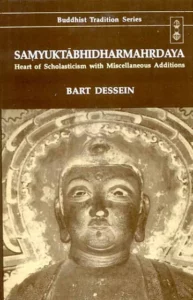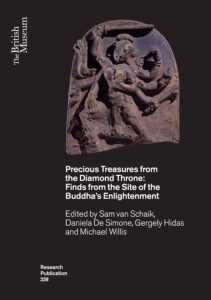 Sam van Schaik, Daniela De Simone (UGent) , Gergely Hidas and Michael Willis, eds. Precious treasures from the diamond throne: finds from the site of the Buddha’s enlightenment. In British Museum Research Publications 228. British Museum, 2021.
Sam van Schaik, Daniela De Simone (UGent) , Gergely Hidas and Michael Willis, eds. Precious treasures from the diamond throne: finds from the site of the Buddha’s enlightenment. In British Museum Research Publications 228. British Museum, 2021.
The Mahābodhi temple at Bodhgayā in eastern India has long been recognised as the place where the Buddha sat in meditation and attained enlightenment. The site, soon identified as the ‘Diamond Throne’ or vajrāsana, became a destination for pilgrims and a focus of religious attention for more than two thousand years. This volume presents new research on Bodhgayā and assesses the important archaeological, artistic and literary evidence that bears witness to the Buddha’s enlightenment and to the enduring significance of Bodhgayā in the history of Buddhism. The book brings together a team of international scholars to look at the history and perception of the site across the Buddhist world and its position in the networks of patronage and complex religious landscape of northern India. The volume assesses the site’s decline in the thirteenth century, as well as its subsequent revival as a result of archaeological excavations in the nineteenth century. Using the British Museum’s collections as a base, the authors discuss the rich material culture excavated from the site that highlights Bodhgayā’s importance in the field of Buddhist studies.
Book details:
ISSN: 1747-3640
ISBN: 9780861592289
Pages: 224 pages
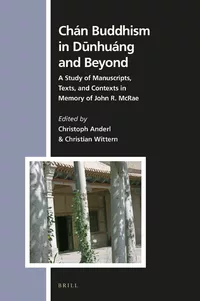 This volume is dedicated to the memory of the eminent Chán scholar John McRae and investigates the spread of early Chán in a historical, multi-lingual, and interreligious context. Combining the expertise of scholars of Chinese, Tibetan, Uighur, and Tangut Buddhism, the edited volume is based on a thorough study of manuscripts from Dūnhuáng, Turfan, and Karakhoto, tracing the particular features of Chán in the Northwestern and Northern regions of late medieval China.
This volume is dedicated to the memory of the eminent Chán scholar John McRae and investigates the spread of early Chán in a historical, multi-lingual, and interreligious context. Combining the expertise of scholars of Chinese, Tibetan, Uighur, and Tangut Buddhism, the edited volume is based on a thorough study of manuscripts from Dūnhuáng, Turfan, and Karakhoto, tracing the particular features of Chán in the Northwestern and Northern regions of late medieval China.
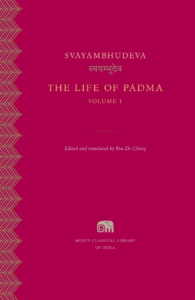
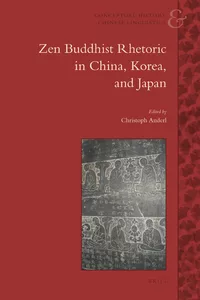 One of the key factors for the success of the Chán/Sǒn/Zen schools in East Asia was the creativity of their adherents concerning the development of innovative literary genres and the skillful application of linguistic and rhetorical devices in their textual products. From the very beginning, Zen Buddhists used literature in order to attract the attention and support of influential lay Buddhists, such as literati, officials, and members of the aristocracy. Consequently, Zen Buddhist texts had a deep and lasting impact on the development of East Asian languages, literary genres, and rhetorical devices, and more generally, on East Asian culture. In this volume, leading specialists in East Asian Buddhism and linguistics analyze the interplay of language and doctrine/ideology in Chinese Chán, Korean Sŏn, and Japanese Zen, as well as tracing developments triggered by changes in the respective sociopolitical and socio-religious contexts. As a special focus, Zen rhetoric will be related to pre-Chán Buddhist literary developments in India and China, in order to trace continuities and changes in the application of rhetorical strategies in the overall framework of Buddhist literary production. Through this diachronic and comparative approach, the great complexity and the multifaceted features of Chán/Sŏn/Zen literature is revealed.
One of the key factors for the success of the Chán/Sǒn/Zen schools in East Asia was the creativity of their adherents concerning the development of innovative literary genres and the skillful application of linguistic and rhetorical devices in their textual products. From the very beginning, Zen Buddhists used literature in order to attract the attention and support of influential lay Buddhists, such as literati, officials, and members of the aristocracy. Consequently, Zen Buddhist texts had a deep and lasting impact on the development of East Asian languages, literary genres, and rhetorical devices, and more generally, on East Asian culture. In this volume, leading specialists in East Asian Buddhism and linguistics analyze the interplay of language and doctrine/ideology in Chinese Chán, Korean Sŏn, and Japanese Zen, as well as tracing developments triggered by changes in the respective sociopolitical and socio-religious contexts. As a special focus, Zen rhetoric will be related to pre-Chán Buddhist literary developments in India and China, in order to trace continuities and changes in the application of rhetorical strategies in the overall framework of Buddhist literary production. Through this diachronic and comparative approach, the great complexity and the multifaceted features of Chán/Sŏn/Zen literature is revealed.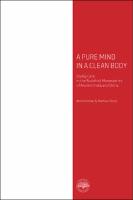 Buddhist monasteries, in both Ancient India and China, have played a crucial social role, for religious as well as for lay people. They rightfully attract the attention of many scholars, discussing historical backgrounds, institutional networks, or influential masters. Still, some aspects of monastic life have not yet received the attention they deserve. This book therefore aims to study some of the most essential, but often overlooked, issues of Buddhist life: namely, practices and objects of bodily care. For monastic authors, bodily care primarily involves bathing, washing, cleaning, shaving and trimming the nails, activities of everyday life that are performed by lay people and monastics alike. In this sense, they are all highly recognizable and, while structuring monastic life, equally provide a potential bridge between two worlds that are constantly interacting with each other: monastic people and their lay followers. Bodily practices might be viewed as relatively simple and elementary, but it is exactly through their triviality that they give us a clear insight into the structure and development of Buddhist monasteries. Over time, Buddhist monks and nuns have, through their painstaking effort into regulating bodily care, defined the identity of the Buddhist saṃgha, overtly displaying it to the laity.
Buddhist monasteries, in both Ancient India and China, have played a crucial social role, for religious as well as for lay people. They rightfully attract the attention of many scholars, discussing historical backgrounds, institutional networks, or influential masters. Still, some aspects of monastic life have not yet received the attention they deserve. This book therefore aims to study some of the most essential, but often overlooked, issues of Buddhist life: namely, practices and objects of bodily care. For monastic authors, bodily care primarily involves bathing, washing, cleaning, shaving and trimming the nails, activities of everyday life that are performed by lay people and monastics alike. In this sense, they are all highly recognizable and, while structuring monastic life, equally provide a potential bridge between two worlds that are constantly interacting with each other: monastic people and their lay followers. Bodily practices might be viewed as relatively simple and elementary, but it is exactly through their triviality that they give us a clear insight into the structure and development of Buddhist monasteries. Over time, Buddhist monks and nuns have, through their painstaking effort into regulating bodily care, defined the identity of the Buddhist saṃgha, overtly displaying it to the laity. In no region of the world Buddhism can be seen as a unified doctrinal system. It rather consists of a multitude of different ideas, practices and behaviours. Geographical, social, political, economic, philosophical, religious, and also linguistic factors all played their role in its development and spread, but this role was different from region to region. Based on up-to-date research, this book aims at unraveling the complex factors that shaped the presence of particular forms of Buddhism in the regions to the north and the east of India. The result is a fascinating view on the mechanisms that allowed or hampered the presence of (certain aspects of) Buddhism in regions such as Central Asia, China, Tibet, Mongolia, or Korea.
In no region of the world Buddhism can be seen as a unified doctrinal system. It rather consists of a multitude of different ideas, practices and behaviours. Geographical, social, political, economic, philosophical, religious, and also linguistic factors all played their role in its development and spread, but this role was different from region to region. Based on up-to-date research, this book aims at unraveling the complex factors that shaped the presence of particular forms of Buddhism in the regions to the north and the east of India. The result is a fascinating view on the mechanisms that allowed or hampered the presence of (certain aspects of) Buddhism in regions such as Central Asia, China, Tibet, Mongolia, or Korea. Het boeddhisme is zonder twijfel een van de grote wereldreligies. In het tweeënhalve millennium dat ons scheidt van de geboorte van de historische Boeddha heeft zijn leer zich verspreid naar Zuid-, Zuidoost- en Oost-Azië. Het boeddhisme heeft het filosofisch en religieus leven van verscheidene volkeren diepgaand beïnvloed of is zelfs een integraal deel van hun traditionele cultuur geworden. Ook in de Verenigde Staten en Europa geniet het boeddhisme een groeiende belangstelling.
Het boeddhisme is zonder twijfel een van de grote wereldreligies. In het tweeënhalve millennium dat ons scheidt van de geboorte van de historische Boeddha heeft zijn leer zich verspreid naar Zuid-, Zuidoost- en Oost-Azië. Het boeddhisme heeft het filosofisch en religieus leven van verscheidene volkeren diepgaand beïnvloed of is zelfs een integraal deel van hun traditionele cultuur geworden. Ook in de Verenigde Staten en Europa geniet het boeddhisme een groeiende belangstelling.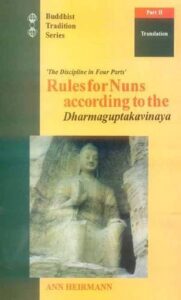 The purpose of this work is, on the one hand, to give an annotated English translation of the Chinese version of the bhiksunivibhanga of the Dharmaguptakavinaya, and on the other hand to study the life and the career of Buddhist nun as described in the vinaya literature. This vinaya laid the foundation of Chinese monastic life. As the Dharmaguptakavinaya came into being in symbiosis with other vinaya traditions, a comparison is made with these other traditions on important issues.
The purpose of this work is, on the one hand, to give an annotated English translation of the Chinese version of the bhiksunivibhanga of the Dharmaguptakavinaya, and on the other hand to study the life and the career of Buddhist nun as described in the vinaya literature. This vinaya laid the foundation of Chinese monastic life. As the Dharmaguptakavinaya came into being in symbiosis with other vinaya traditions, a comparison is made with these other traditions on important issues.